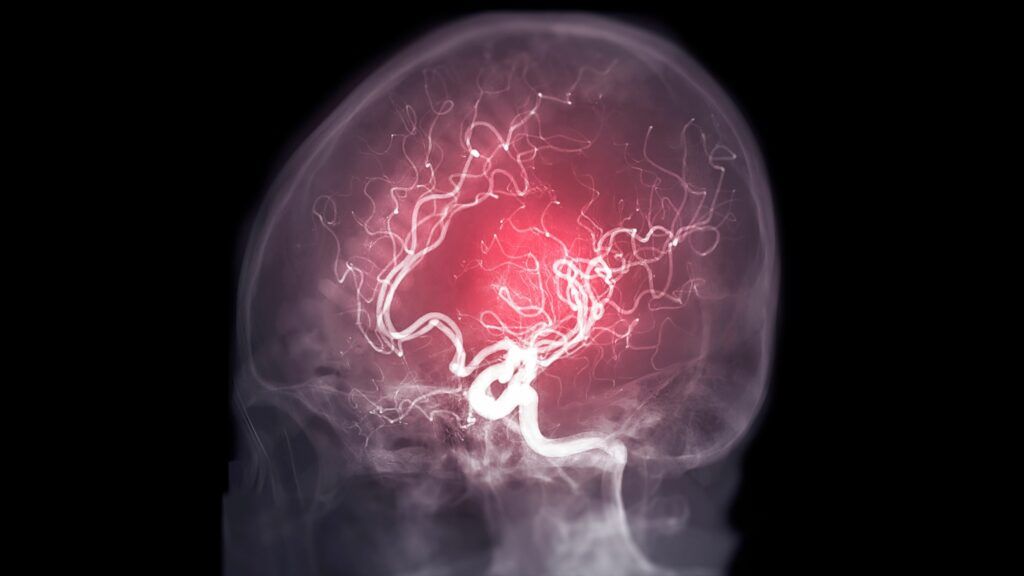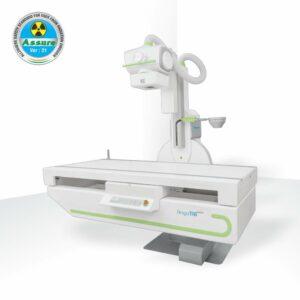Are you curious about fluoroscopy machines and their role in the medical industry? Would you like to gain knowledge regarding the various types of fluoroscopy machines and their usage in medical procedures? You don’t need to look any further than this blog!. In this blog, we will delve into the features, benefits, and applications of various fluoroscopy machines, including fixed, mobile, C-arm, orthopedic, cardiac machines. We will also explore the advantages of low-dose and digital fluoroscopy machines, and how they can improve workflow efficiency and reduce radiation exposure.
But that’s not all – to add to the excitement, we will introduce you to Medzell, a futuristic B2B platform that promotes Indian medical devices in emerging markets.
Types of Fluoroscopy Machines
Let’s delve deeper into the various types of fluoroscopy machines and their unique attributes.
- Fixed Fluoroscopy Machines: These stationary units are a cornerstone of medical imaging infrastructure. Renowned for their exceptional image quality and stability, fixed fluoroscopy machines are predominantly found in hospitals and medical centers. Their versatility makes them indispensable for a wide range of procedures, including gastrointestinal studies, angiography, and orthopedic interventions. Their stationary nature ensures consistent imaging quality and allows for more complex procedures that require meticulous positioning.
- Mobile C-Arm Machines: Offering unmatched portability and versatility, mobile C-arm machines are designed for easy maneuverability and positioning. This mobility makes them ideal for use in operating rooms, clinics, and emergency settings. They are frequently employed in orthopedic surgeries, vascular procedures, and pain management interventions. The adjustable C-arm structure enables healthcare professionals to capture images from various angles during surgical procedures, aiding real-time decision-making.
- Digital Fluoroscopy Systems: The advent of digital technology has transformed fluoroscopy systems. Digital fluoroscopy systems have replaced traditional analog systems due to their superior image quality and efficient image storage capabilities. These systems employ digital detectors and advanced software to provide real-time imaging. Additionally, they facilitate convenient storage, retrieval, and sharing of patient data, enhancing collaboration among healthcare providers.
- Mini C-Arm Machines: Catering to procedures in constrained spaces, mini C-arm machines are compact and lightweight. They find extensive application in orthopedic surgeries, particularly those involving extremities like hand and foot surgeries. Their smaller size allows them to be used in settings where larger equipment might be impractical, while still providing the necessary imaging capabilities.
- Remote-Controlled Fluoroscopy Systems: Incorporating remote-control technology, these systems grant operators the ability to manipulate fluoroscopy machines from a distance. This feature proves invaluable in scenarios where precise adjustments are essential but direct physical contact isn’t feasible. Remote-controlled systems enable healthcare professionals to optimize imaging angles without disturbing the patient or the sterile field in surgical settings.
- Analog Fluoroscopy Machines: Although digital systems have become prevalent, some healthcare facilities still employ analog fluoroscopy machines. These machines employ X-ray film and intensifying screens to generate images. However, analog systems are gradually being phased out due to digital systems advantages, including higher image quality and efficient data management.
- Cardiac Catheterization Labs (Cath Labs): These specialized environments offer advanced imaging capabilities tailored for cardiac procedures. Cath labs empower interventional cardiologists to perform intricate procedures such as angiograms, stent placements, and electrophysiology studies with unparalleled precision. The real-time imaging provided by cath labs aids in precise catheter navigation and treatment delivery.
- Surgical Fluoroscopy Machines: Integrated into surgical suites, surgical fluoroscopy machines provide real-time imaging during complex surgical procedures. Surgeons rely on these machines to guide them through intricate operations, such as spinal surgeries and minimally invasive procedures. The instant feedback offered by surgical fluoroscopy aids in ensuring optimal outcomes and patient safety.
- Pediatric Fluoroscopy Machines: Engineered with the unique needs of pediatric patients in mind, these machines utilize lower radiation doses to ensure the safety of children. They account for the smaller size of pediatric patients and offer imaging tailored to their medical requirements, minimizing radiation exposure.
- Orthopedic Fluoroscopy Machines: Optimized for orthopedic procedures, these machines allow orthopedic surgeons to visualize joints and bones in real-time during surgeries. Procedures like joint replacements and fracture repairs benefit from the immediate feedback and precise imaging provided by orthopedic fluoroscopy machines.
In sum, the diverse types of fluoroscopy machines underscore the dynamic advancements within medical imaging technology. They cater to specific medical needs, specialties, and procedures, enhancing diagnostic accuracy and guiding interventions. These machines exemplify the evolving synergy between technology and healthcare, ultimately leading to improved patient care and outcomes.
Understanding Fixed Fluoroscopy Machines: Applications and Advantages
Fixed fluoroscopy machines are a common type of imaging equipment used in hospitals and clinics. These machines are stationary and consist of an X-ray tube mounted on a C-arm, which can rotate and move vertically and horizontally. As a result, the machines can accurately position the patient and produce live images of the body.
Fixed fluoroscopy machines are commonly used in procedures such as:
- Angiography: an imaging test used to visualize blood vessels and arteries
- Gastrointestinal procedures: to diagnose and treat digestive system disorders
- Urological procedures: to diagnose and treat urinary system disorders
- Orthopedic procedures: to visualize bones and joints during surgery
The advantages of fixed fluoroscopy machines include:
- High image quality: The stationary nature of the machine allows for high-quality, detailed images.
- Real-time imaging: Fixed fluoroscopy machines allow for real-time imaging during procedures, which can aid in precision and accuracy.
- Reduced radiation exposure: Fixed fluoroscopy machines often have lower radiation levels compared to mobile machines, which can be beneficial for both patients and medical staff.
What You Need to Know About Mobile Fluoroscopy Machines
Mobile fluoroscopy machines, often called portable fluoroscopy machines, are imaging devices that can be relocated between different sites with ease. These machines are mounted on a mobile stand with wheels, making them easy to transport.
Mobile fluoroscopy machines are commonly used in procedures such as:
- Emergency medicine: to quickly diagnose and treat injuries
- Operating rooms: for surgical procedures that require imaging
- Interventional procedures: to guide catheter and wire placement
The advantages of mobile fluoroscopy machines include:
- Versatility: These machines have the flexibility to be utilized in different settings and locations.
- Accessibility: These machines can be moved to the patient, making them ideal for emergency situations or patients who are unable to be transported.
- Time and cost savings: Mobile fluoroscopy machines eliminate the need for patients to be transported to a separate imaging room, saving time and money.
C-Arm Fluoroscopy Machines: Applications and Benefits
C-arm fluoroscopy machines are a type of mobile fluoroscopy machine that is commonly used in surgical settings. These machines consist of a C-shaped arm that houses the X-ray tube and image intensifier. The C-arm can be moved and rotated to capture real-time images from different angles.
C-arm fluoroscopy machines are named after their C-shaped arm, which allows them to be positioned around the patient to capture images from different angles. Various procedures such as cardiac catheterization, orthopedic surgery, and urology require using these machines. The main advantage of C-arm fluoroscopy machines is their flexibility, which allows for a range of imaging angles and positions.
How Orthopedic Fluoroscopy Machines Are Used in Medical Procedures
Orthopedic fluoroscopy machines are specialized machines used in orthopedic surgery, such as joint replacements, spine surgery, and fracture repair. These machines provide real-time imaging of the surgical site, allowing the surgeon to guide instruments and implants with precision. Orthopedic fluoroscopy machines are highly valuable for orthopedic surgeons due to their capacity to offer intricate images of the skeletal system, which is their major advantage.
The Advantages of Digital Fluoroscopy Machines
Digital fluoroscopy machines are the latest innovation in medical imaging technology, providing higher image quality and improved workflow efficiency. These machines use digital sensors to get X-ray images, which are then processed and displayed on a monitor with high resolution in real time.
These digitally operated offer several advanced features such as image stitching, noise reduction, and post-processing. These features enable doctors to improve image quality and extract more information from X-ray images. These machines also offer greater flexibility in terms of image storage and transfer, allowing doctors to easily share images with other medical professionals for consultation and diagnosis.
Fluoroscopy Machines from Leading Indian Manufacturers
AngioTab 9030 DRF
Allengers Medical Systems Ltd., a leading manufacturer and exporter of fluoroscopy machines in India, offers the AngioTab 9030 DRF, a versatile and environment-friendly machine for conducting a variety of medical examinations with excellent high-quality images at very low doses. The AngioTab 9030 DRF is a dual-capability Digital Radio Fluoro system with a dynamic detector and high DQE with an FOV of 17” x 17”.
This device offers head-to-toe coverage with remote and tableside control for easy operation. It also comes with proprietary Synergy DR Software and DSA Package, making it a complete digital workflow supporting HMS, PACS, and cloud reporting. With advanced pre and post-processing features, this device provides complete remote-controlled access with zero radiation to the radiologist.
The AngioTab 9030 DRF is designed with a wide range of configurations and clinical applications. It has versatile application capability, including interventional procedures, ERCP, myelography, venography, cholangiography, and more. Additionally, it offers optional height adjustment of the table and a SID of 180 cms for chest radiography, providing a comfortable experience for both the patient and the physician.
Overall, Allengers Medical Systems Ltd.’s AngioTab 9030 DRF is an excellent device for medical professionals seeking a reliable and high-quality fluoroscopy machine. Its advanced features and capabilities make it a valuable addition to any medical facility looking to enhance patient care and diagnosis.
Conclusion



